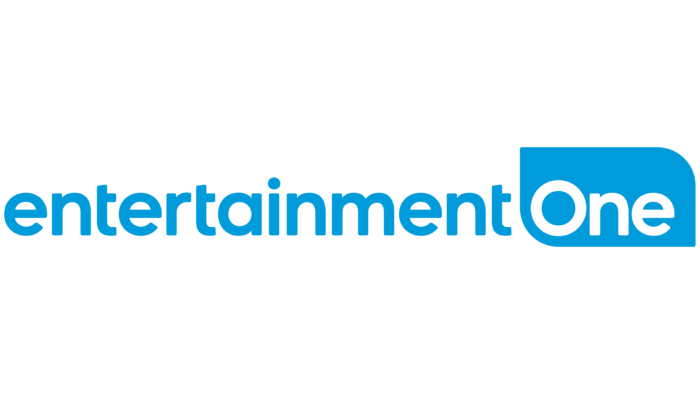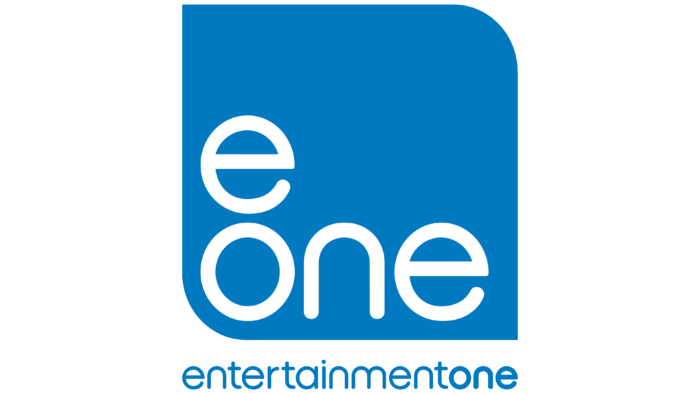A film and TV series producer needs a recognizable stylish, unique, and personable symbol. The Entertainment One logo is just that. Designers could interestingly design the company’s name, supplementing it with original elements.
Entertainment One: Brand overview
| Founded: | 1970 |
| Founder: | Darren Throop |
| Headquarters: | Toronto, Ontario, Canada |
| Website: | entertainmentone.com |
Meaning and History
Entertainment One had two major predecessors: CD Plus and Records on Wheels. After their merger, ROW Entertainment was born. It received its current name in 2010, and before that, it was known as E1 Entertainment. Naturally, the frequent renaming was accompanied by a complete change in visual identity. This process included the creation of logos that matched the new branding.
What is Entertainment One?
Entertainment One is a Canadian company better known as eOne. It produces its films and series and buys other people’s TV content to distribute it abroad. Since 2019, it has been owned by the multinational conglomerate Hasbro, Inc.
1970 – 1980
In 1970, Records on Wheels appeared, which gave rise to Entertainment One in the future. The designers played on its name in the logo, depicting two black wheels in the form of wide rings and a frame connecting them. This design simultaneously resembled both a skateboard and the underside of a car. Above it was the word “RECORDS,” curved in the shape of a rainbow. His letters consisted of wide lines and were painted in two colors: black on top and white on the bottom.
The rest of the brand name was placed under the arch. The designers made it completely black and divided it into two lines. Notably, the space inside the “O” in “ON” was stylized as a five-pointed star.
1980 – 2005
After Records on Wheels merged with CD Plus, the newly formed company became ROW Entertainment. Its name served as the basis for the logo, in which the word “ROW” was written in large red letters with a three-dimensional effect. The designers didn’t make only the “O” voluminous – instead, they depicted it as a shiny CD. At the bottom was the phrase “MUSIC AND VIDEO,” consisting of capital glyphs in white.
2005 – 2009
In 2005, ROW Entertainment made a major acquisition by purchasing the record label Koch Entertainment. After that, it was reorganized and became the Entertainment One Income Fund. Her new logo contained a monogram of the letter “e” and the number 1. In the center was a red unit formed from two rectangles. A gray line was drawn perpendicular to its vertical part, which served as the beginning of an open ring of the same color.
This part of the logo was significantly larger than the “Entertainment One” lettering. The wordmark was located to the right of the emblem and was divided into two lines with left alignment. The designers made both words black and used the same sans-serif font.
2009 – 2010
Over the course of two years, some series and films featured the logo with the text “E1 Entertainment”. Above was the first half of the inscription. The designers depicted it so that it looks like the letter “E” with the number 1 slightly turned to the right side. And the word “ENTERTAINMENT,” consisting entirely of capital glyphs, was located at the very bottom.
The basis for the inscription was the top of a certain sphere, which denoted the planet. It was painted in gradient blue. And in the background, you could see the same blue rays of different shades. All this was placed in a square.
2010 – 2015
In 2010, the company began using a logo that could be roughly divided into two parts. The first fragment is a light blue square shape with rounded corners on the top right and bottom left. Inside it was the letter “e” and the word “one” in white. They were aligned on the right side.
The second part was a blue inscription “entertainment one” consisting of lowercase characters. Due to the lack of space, the two words were only separated by typography: the last three letters were bolder than all the previous ones.
2015 – today
Designer Steven Preisman led the team that redesigned Entertainment One’sOne’s visual identity in 2015. They updated the logo by combining two elements into one design. They got the inscription “entertainment One,” where the only capital letter was “O.” Moreover, if the first word was blue, the second word was made white and placed inside a blue figure in the form of a rectangle with two rounded corners.
Font and Colors
The main distinguishing mark of the Canadian company is its name. The designers tried to make its graphical representation simple and memorable, for which they used negative space: the word “One” is formed by empty spaces inside a blue geometric shape.
The font chosen by the logo’s creators shares similarities with Circe Bold by ParaType and Averta Standard Bold by Kostas Bartsokas. It is a bold grotesque with rounded glyphs of an unusual shape. There are only two colors: white and light blue (shade # 009CDB).
Entertainment One color codes
| Light Blue | Hex color: | #009cdb |
|---|---|---|
| RGB: | 0 156 219 | |
| CMYK: | 100 29 0 14 | |
| Pantone: | PMS 801 C |











